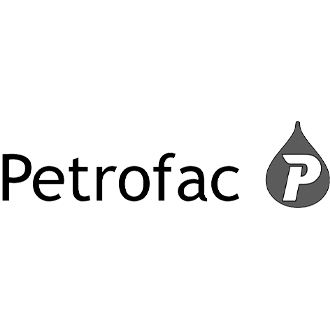PANZURA CLOUDFS VS. PeerGFS
Stop Paying the Tax: CloudFS Eliminates Hidden Costs
Peer Software PeerGFS's legacy design potentially imposes "taxes" that manifest in compounding costs—the configuration tax could burden IT teams with maintaining ransomware and data loss protection across multiple storage vendors at every site (when 94% of attacks target backups). The replication tax O(N²) potentially multiplies your dataset across every location, ballooning costs and potentially degrading performance as much as 10-100x slower compared to CloudFS.
Panzura CloudFS, a PeerGFS alternative, eliminates these "taxes" through its elegant O(N) design where distributed peer-to-peer locking scales linearly from 3 to 500+ locations without bottlenecks—sites communicate directly with no central coordinator—while global deduplication results in up to 70-80% less data and frictionless collaboration. Built-in immutability. AI-powered Threat Control, and 60-second recovery are inherent. Native multi-protocol access (SMB/NFS/S3) enables AI/ML workflows without costly data replication, and as the only FIPS 140-3 certified solution of its kind, CloudFS qualifies for government, healthcare, and financial services. Stop paying the tax, store data once, scale infinitely.
Are You Overpaying? Get File Data Economics That Work in Your Favor.
You're making a choice. Every additional site with PeerGFS multiplies your costs. Store your data once with CloudFS and access it everywhere—or pay the "replication tax" forever. Here's the potential Economic Reality of a 200TB dataset across 10 locations:
- PeerGFS: 2PB total capacity (200TB × 10 sites)—you pay 10× the storage
- CloudFS: 60TB cloud storage (70-80% deduplication)—you pay once
- Your savings: 97% reduction in total capacity
With PeerGFS, every site needs a complete copy of your data. That means for 2PB of capacity you must purchase, power, cool, and refresh—at every location, every refresh cycle. Depending on your configuration, you're paying the same storage over and over again. With Panzura CloudFS, global deduplication stores your data once in the cloud with typical 70-80% data reduction and LAN-speed local access.

*Assumes that all file data must be accessible at all sites, which is common in many industries and environments. More selective data distribution requirements would see proportionally lower capacity impact, though the fundamental architectural difference remains.
Trusted by organizations that refuse to pay unnecessary costs.










Milwaukee Tool Reduces Time to Market, Increases Team Agility
CloudFS delivered 96.5% storage cost reduction and eliminated tape backup infrastructure entirely.

Hanson Saves Thousands of Hours by Eliminating Manual File Syncing
Hanson saved $62K in year one alone—backup licenses eliminated, maintenance contracts gone, and storage capacity reduced by 75%.

Mead & Hunt Tackles Infra Costs, Collaboration Bottlenecks, Compliance
A leading engineering firm cut IT costs by hundreds of thousands while growing 50% with hybrid cloud transformation.
Four Hidden Costs That CloudFS Eliminates
Hardware Refresh Cycles
PeerGFS deployments potentially require simultaneous hardware refresh across all sites to maintain consistency. Ten sites = 10x the implementation labor, and 10x the migration risk. CloudFS eliminates this entirely — cloud providers handle hardware refresh invisibly with zero downtime and zero customer involvement. No "refesh tax." Ever.
The Double-Migration Penalty
When you choose PeerGFS for "infrastructure preservation," as site count or user load grows, it possibly hits limits—performance bottlenecks that no hardware can overcome. You pay a "re-architecture tax" when you outgrow it. CloudFS scales from 5 to 500+ sites without re-architecture. Deploy once, scale forever.
Multi-Vendor Complexity
File access failures with PeerGFS potentially create a diagnostic maze. Is it the replication software or the storage hardware? Some customers report extended MTTR as support tickets bounce between Peer Software, NetApp, Dell, and Microsoft. CloudFS has single-vendor accountability. One call, one team, one resolution. No "complexity tax."
Operational Overhead
Managing storage across distributed locations potentially multiplies administrative burden. Capacity planning, monitoring, patching, firmware updates—all repeated at every site. CloudFS dramatically reduces operational overhead regardless of site count. Pay the "architecture tax" once, not repeatedly.
When Architecture Matters: The Double-Migration Penalty
In the following scenario, what starts as an "infrastructure preservation" strategy becomes a potential double-migration dilemma by year 5 as centralized architecture possibly hits scaling limits. Users could lose billable hours annually, file opens slow to multi-second delays, and management eventually approves complete re-architecture—making the original investment a potential sunk cost. CloudFS eliminates this possible double-migration tax by scaling linearly from day one to 500+ sites without architectural constraints.
Year 0-1
Honeymoon Phase
- PeerGFS deployment complete at 15 sites
- Performance acceptable, users satisfied
- Initial investment: Licensing + implementation
- Hidden accumulation: Configuration drift possibly begins across storage platforms
Year 2
Warning Signs Emerge
- Expanded to 30 sites through growth and M&A
- File opens possibly taking 3-5 seconds during peak hours
- Occasional lock timeout errors potentially reported
- IT begins troubleshooting with Peer Software + storage vendors
- Cost impact: Possibly 15-30 min/day/user productivity losses for 50-person team
Year 3
The Performance Wall
- Now at 45 sites, approaching possible architectural ceiling
- Lock timeouts possibly frequent, user complaints escalating
- Multi-second file opens potentially become norm
- Executive pressure mounts: "Why is file access so slow?"
- Cost impact: 15-20% potentially longer time-to-market vs competitors using CloudFS
Year 4
The Breaking Point
- Hit 50+ sites, centralized PMC architecture possibly bottlenecked
- Users potentially lose 200-250 billable hours annually per employee
- Management approves migration to distributed architecture
- Original investment now potentially becomes sunk cost
- Cost impact: Possible double migration costs + 6-12 months project timeline
Year 5
True Cost—The Total "Tax Bill"
- Complete re-architecture to CloudFS and procurement process
- Cumulative lost productivity over 4 years
- Original licensing (sunk cost)
- Double migration costs including licensing
- Competitive disadvantage from delays
55% of organizations hit by ransomware take over a month to recover [2]. With PeerGFS inheriting security from underlying storage, recovery potentially depends on configuration at each site. CloudFS's built-in immutability and 60-second recovery eliminates this risk.
[2] Source: Sophos State of Ransomware 2024
The Panzura CloudFS Advantage is Real
| Choose Panzura CloudFS when ... | PeerGFS may fall short when ... | ||
|
|
3 to 500+ locations requiring collaborative workflows with global file locking
|
|
You have many locations (PeerGFS has potential architectural limits)
|
|
|
100TB+ total data where storage efficiency directly impacts economics
|
|
You have >50TB of data (economics favor single-pool deduplication)
|
|
|
Anticipated expansion (headcount, data volume, locations, M&A activity)
|
|
You're planning growth (PeerGFS possibly has architectural ceiling on number of sites)
|
|
|
5-year TCO optimization rather than 1-year accounting optics
|
|
Your CFO prioritizes long-term business value (not short-term optics)
|
|
|
FIPS 140-3 compliance required (government, defense, NIST 800-171)
|
|
Your ease of compliance deployment is key (PeerGFS lacks FIPS 140-3 certification)
|
|
|
AI-powered ransomware resilience critical (60-second recovery)
|
|
You need built-in data loss protection (PeerGFS inherits security from underlying infrastructure)
|
|
|
Cloud-first OR cloud-eventual strategy with native S3 API integration
|
|
Your AI/ML workflows need S3 access (PeerGFS doesn't provide native S3 interface)
|
|
|
Single-vendor accountability is preferred over multi-vendor finger pointing
|
|
You need 24/7/365 single-vendor support (not Peer Software + storage vendors)
|
|
|
Large file collaboration (CAD/BIM/video) requiring byte-range locking
|
|
You need performance at scale (PeerGFS centralized locking potentially creates bottlenecks)
|
|
|
Modern infrastructure is aligned with enterprise digital transformation
|
|
You prefer cloud-native architecture over legacy replication overlay
|
← Swipe to see more →
What You Need to Know About the Hidden Taxes
Global file systems built as replication overlays on top of existing storage charge hidden costs that only become visible during scaling, security incidents, or infrastructure refresh cycles. These "taxes" compound over time and aren't captured in initial TCO calculations. This three-part series breaks it down with specific cost examples, attack scenarios, and technical analysis of why Panzura CloudFS avoids these expenses.

The Architecture Tax
When centralized file locking hits scaling limits and forces costly re-architecture that CloudFS never requires.

The Replication Tax
How storage multiplication across sites creates compounding costs that CloudFS's single-pool deduplication avoids.

The Configuration Tax
Why inherited security models charge ongoing operational "taxes" that CloudFS eliminates through its inherent design.
Panzura CloudFS vs. Peer Software PeerGFS FAQs
-
What is the 5-year total cost of ownership (TCO) difference between Peer Software PeerGFS and Panzura CloudFS?
Panzura CloudFS customers typically achieve significantly lower total cost of ownership (TCO) than Peer Software PeerGFS, with potential savings ranging into millions of dollars depending on the deployment and number of sites. PeerGFS multiplies storage by site count, while CloudFS stores it once after deduplication. CloudFS potentially eliminates personnel costs, infrastructure refresh, and power/cooling expenses that PeerGFS creates.
-
Can Peer Software PeerGFS scale beyond 50 locations without performance degradation?
Peer Software PeerGFS faces potential architectural scaling constraints around 50 locations due to its centralized Peer Management Center creating O(N²) exponential complexity that potentially degrades performance 10-100x slower than Panzura CloudFS as a PeerGFS alternative. Customer deployments with PeerGFS appear to cluster between 3-50 sites with the largest documented possibly at 51 sites. Organizations expanding beyond this limit possibly face re-architecture within 3-5 years, while CloudFS scales linearly from 3 to 500 ore more locations without bottlenecks.
-
How does the "configuration tax" affect ransomware and data loss recovery with Peer Software PeerGFS versus CloudFS?
The "configuration tax" is the potential risk when ransomware and data loss protection depends on correct storage configuration at each site rather than architecture. Peer Software PeerGFS recovery may depend on whether underlying storage (NetApp, Dell, Windows, etc.) was properly configured with immutable snapshots, creating potential gaps where 94% of backup attacks succeed 57% of the time. Panzura CloudFS eliminates this through built-in immutability and AI-powered Threat Control providing 60-second recovery versus PeerGFS's possible hours-to-days depending on vendor configuration.
-
What is the cost of a double migration from Peer Software PeerGFS to Panzura CloudFS?
Migration costs are possibly hundreds of thousands of dollars for typical 25-site deployments plus the potential sunk cost of the original license and migration. However, migration to Panzura CloudFS delivers potentially millions in 5-year TCO savings. Organizations avoiding double migration in the first place save potentially more, as the double-migration "tax" could be in the millions including potential sunk licensing, productivity losses, and re-architecture costs. CloudFS provides immediate distributed scaling to 500+ sites and FIPS 140-3 certification, which Peer Software PeerGFS lacks.
-
Does Peer Software PeerGFS support multi-protocol access for AI/ML workflows requiring S3 API?
No, Peer Software PeerGFS does not provide native multi-protocol access enabling simultaneous SMB and S3 connectivity to the same dataset. Organizations needing S3 API potentially must replicate data to separate S3 buckets. Panzura CloudFS avoids this by storing the data once with global deduplication, and providing real-time, consistent access across all required protocols (SMB, S3, NFS) via a native S3 API interface. This eliminates duplication, lag, and the associated operational costs, delivering a foundation ready for the 72% of firms now adopting AI according to McKinsey.
-
Why does Panzura CloudFS have FIPS 140-3 certification when Peer Software PeerGFS doesn't?
Peer Software PeerGFS lacks FIPS 140-3 certification. Panzura CloudFS is the only FIPS 140-3 certified hybrid cloud file solution in its category, which generally creates automatic qualification in government and defense contractors (NIST 800-171 compliance required), healthcare providers handling PHI (HIPAA), financial institutions (PCI-DSS, SOX), and regulated manufacturing (ITAR, EAR). For example, Panzura CloudFS is certified and deployable on FedRAMP-authorized infrastructure, unlike competitors who only claim to have security features that support compliance. The difference could result in extended procurement, legal review, and sales cycle length.
-
What happens to file data protection when adding new sites with Peer Software PeerGFS versus Panzura CloudFS?
Adding sites with Peer Software PeerGFS potentially creates file data security gaps requiring manual configuration of immutability on each site's storage (NetApp SnapLock, Dell snapshot locking, Windows VSS, etc.) before protection potentially becomes effective. New acquisitions potentially operate with inconsistent protection until configuration is validated. Panzura CloudFS eliminates these potential gaps because architectural immutability inherent to how file data is written—a new site gets identical automatic protection as all other sides in the mesh with zero configuration required
This analysis is based on publicly available information, vendor documentation, industry research, and independent technical evaluations. Organizations should conduct their own assessments based on specific requirements and environments. *All product and company names are trademarks or registered® trademarks of their respective holders. Use of those names does not imply any affiliation with or endorsement by their owners. The opinions expressed above are solely those of Panzura LLC as of November 7, 2025, and Panzura LLC makes no commitment to update these opinions after such date.

Ready to take a look?
Stop struggling with uncontrolled unstructured data growth and sprawl. Open up visibility, resilience, and immediacy with intelligent hybrid cloud solutions that put you back in control.
